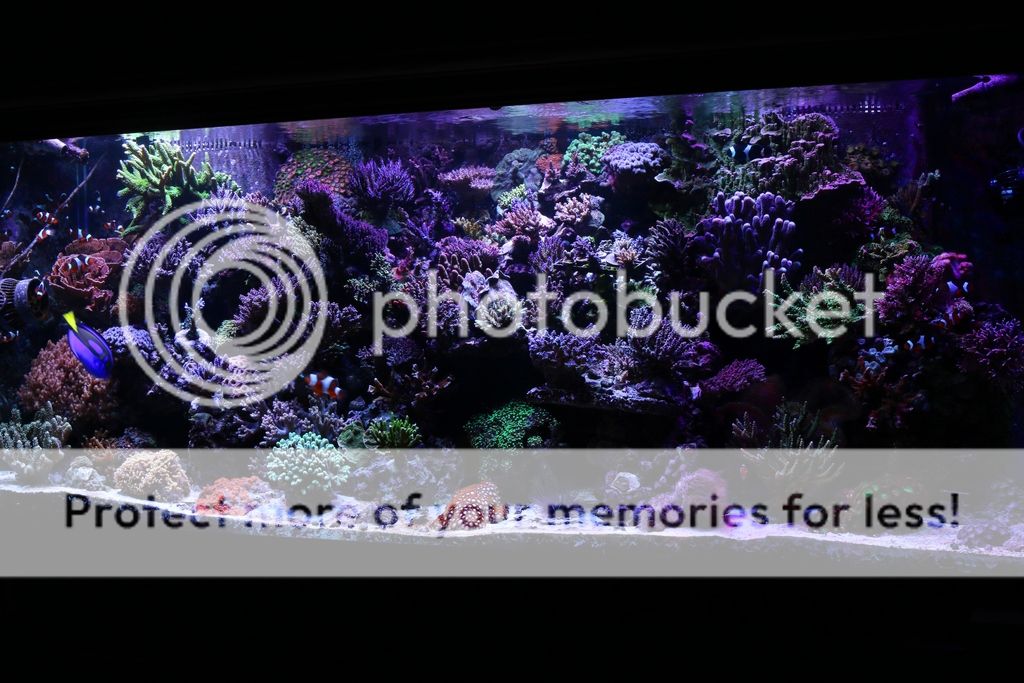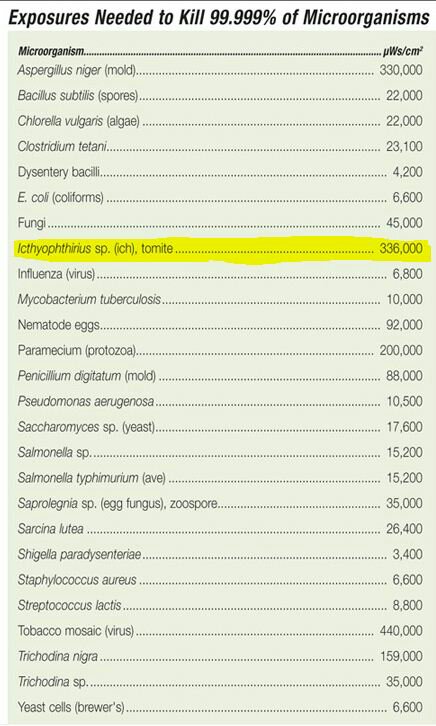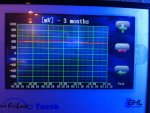PSXerholic
Supporting Member

Since this is a current subject on my tank system, I thought to share this info.
Overall, UV is a good thing to have the tank going through the years.
It helps to avoid or better minimize potential issues down the road.
All right………….UV…………….trying to keep it simple!
There are multiple reasons why it’s beneficial /precautional and unfortunately expensive to run a UV sterilizer.
I say Sterilizer since there is a difference betweensanitizing and sterilizing.
1.) Bacteria control and prevention
In my case, many of you know that I run a bacterialmethod to manage my nutrients, means I overpopulate the good bacteria to breakdown waste.
This can be done in a variety of methods such asBiopellets, Zeo, Vinegar, VSV or any other liquid bacteria supplements etc.
So I use VSV, wich is a mix of different carbons inaddition to amino acids to feed bacteria.
The bad part of any bacterial method is, that you do notjust feed the good bacteria, also you feed the bad bacteria L!!!
These bacteria can be worst case “Pest bacteria” such asRed slime or any other “Disease bacteria” that are harmful to our corals suchas brown jelly disease, Vibrio and many other Bacterial-Coral/Tank diseases.
Many of the bacterial diseases are still unknown.
Bad part of bacterias is, they come in with the niceCoral from a store or coral dealer and even Hydrogen/Peroxide Bayer dip won’tkill it. Some Bacteria will survive deep down in the Coral and rock.
So unless these bacteria do not have a reason toexcessively overpopulate by carbons, high temperatures, amino acid addition,many nutrients etc. they will keep populating in the tank.
In my particular case, I did see (likely from too muchAminos and excessive feeding), a slight overpopulation of “Scavenger bacterialike they are in Waste Away”, which are heterotrophic bacteria types. Thesebacteria do only live in the water column, and do not settle on substrate. Theycan multiply by 10x within 15minutes with enough light and eat all kind ofwaste very effective.
However, if those are excessive in the tank, in a waythat you see a slight hazel in the water when you look along the tank, thenthis can end up in a problem.
a. It can be easily come to a sudden huge bloom wipingout the tank since these bacteria consume a lot of oxygen.
b. Their Oxygen consumption will result in less oxygen,elevated Co2 and therefore causing low PH, especially over night!!! No good inHouston !!!
c. The waste oxidation process consume a lot of ALK,supporting a. & b.
d. A few more undesired effects on water chemistry suchas low ORP etc.
e. Food for Corals and the good bacteria are limitedsince heterotrophic bacteria tend to eat and consume the goodies that thecorals and other bacteria like to have. Means these bad bacteria can competeout the good and desired ones.
This effect can happen easily in fully matured tanksystems that ran for years with no issue. No warning, it just happens!!!!
So a good UV Sterilizer will be able, if correctly sized,help to prevent overpopulation of most bad bacteria in a matured tank systemsince those are mainly heterotrophic.
Do not apply this to a new system, since the “good” boysstill have to grow everywhere in the substrate first.
Keep in mind that some scavenger bacteria cannot becompeted out in a tank by other bacteria in the substrate. They do take thefood source away from the bacteria that live in the substrate which makes it insome cases impossible to bring the tank back in balance. In those cases theonly way is a Hydrogen Peroxide Injection reactor method or a strong UV ;-)
2.) Fish diseases and parasites……….do not forget allkinds of Fish fungus, viruses and parasites such as our friend ICH.
A UV will help to keep parasites and diseases in check.
3.) Better Water conditions
Utilization of a UV will increase the filtration andskimmer efficiency!!!
I observed right after starting the UV, that ORP went up,and skim-mate became more, darker and more stinky, lol.
Also it makes the water more crisp, helps to minimize oreven in some case replaces the use of Activated carbon to remove yellow tint.
That means more PAR and more blue spectrum to yourcorals, which can make a big difference on certain coral colors.
Higher REDOX/ORP means also better Co2/O2 ratio whichsupports to elevate the tank PH.
4.) UV types
I did use a variety of UV lamps in the recent years andmostly did only turn on the UV when needed.
Keep your hands off the Coralife and cheap sterilizer.They might scare the bacteria but mostly do not really work well.
Some have even metal parts in there that will corrode andscrew the tank water.
I can strongly recommend the Aqua UV type or TMC typesterilizer that come with a high pressure true UV-C lamp.
See this article about UV that I found useful and simplyexplains the importance and difference of bulbs and type of sterilizer.
http://www.americanaquariumproducts.com/AquariumUVSterilization.html
5.) Sizing is the biggest issue.
A UV unit should be good for preventive action, but alsobe properly sized to handle asap a bloom or parasitic issue when needed.
So for prevention you use high flow, and for asap actionyou lower the flow to have higher reaction time in the lamp.
From my experience the minimum size should be at least a57W for a 200G tank as a guide.
6.) Installation and dwelling time
Don’t run UV in the sump recirculating the water.
Have a secondary pump taking filtered water and feed itback to the tank.
I tried it and it makes a huge difference!
Another issue with a loop only in the sump, you likelyrun into over sterilization of the sump which is bad for regugia and biomediasumps!
More about this can be found here:
http://www.americanaquariumproducts.com/AquariumUVSterilization.html
Also for the different purposes have the pump loop with arelief valve equipped to be able to vary the flow. In that case you can playwith the flow and exposure time to avoid over sterilization in “preventivemode” if a strong UV is installed.
In order to avoid full sterilization between the sump andtank, I hooked up the UV on one of my two return pumps.
That will still allow planktons and bacteria from thesump to be imported back to the tank.
7.) Over sterilization
It is possible if the above mentioned is not considered,if a very strong UV is being used. Another way to control sterilization is theUtilization in hours per day. Just run the UV on a timer.
8.) Observations I made by use of UV
Clearer water
Better and more vibrant colors
Better Polyp expansion
ORP increased
Skimmer performance increased
Slightly Higher PH
Less use of Activated carbon
Healthier looking corals of course
Less to no issues with diseases of all kind (knock onwood)
Less issues with Algaes of all kind that spore throughthe water column
I can safely pop bubble algae, lol
I guess I covered most of the important stuff here,however read through the link above, that has very valuable info in there.
-Andre












 .
.



